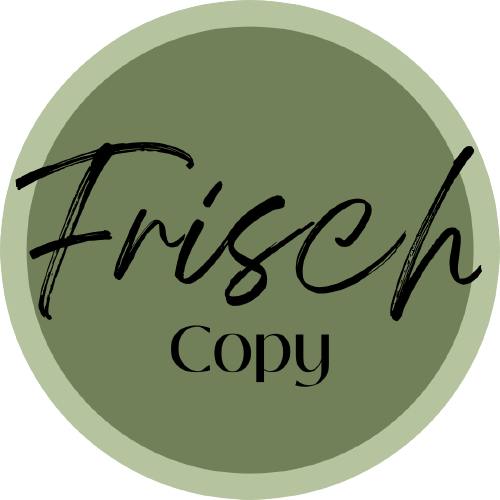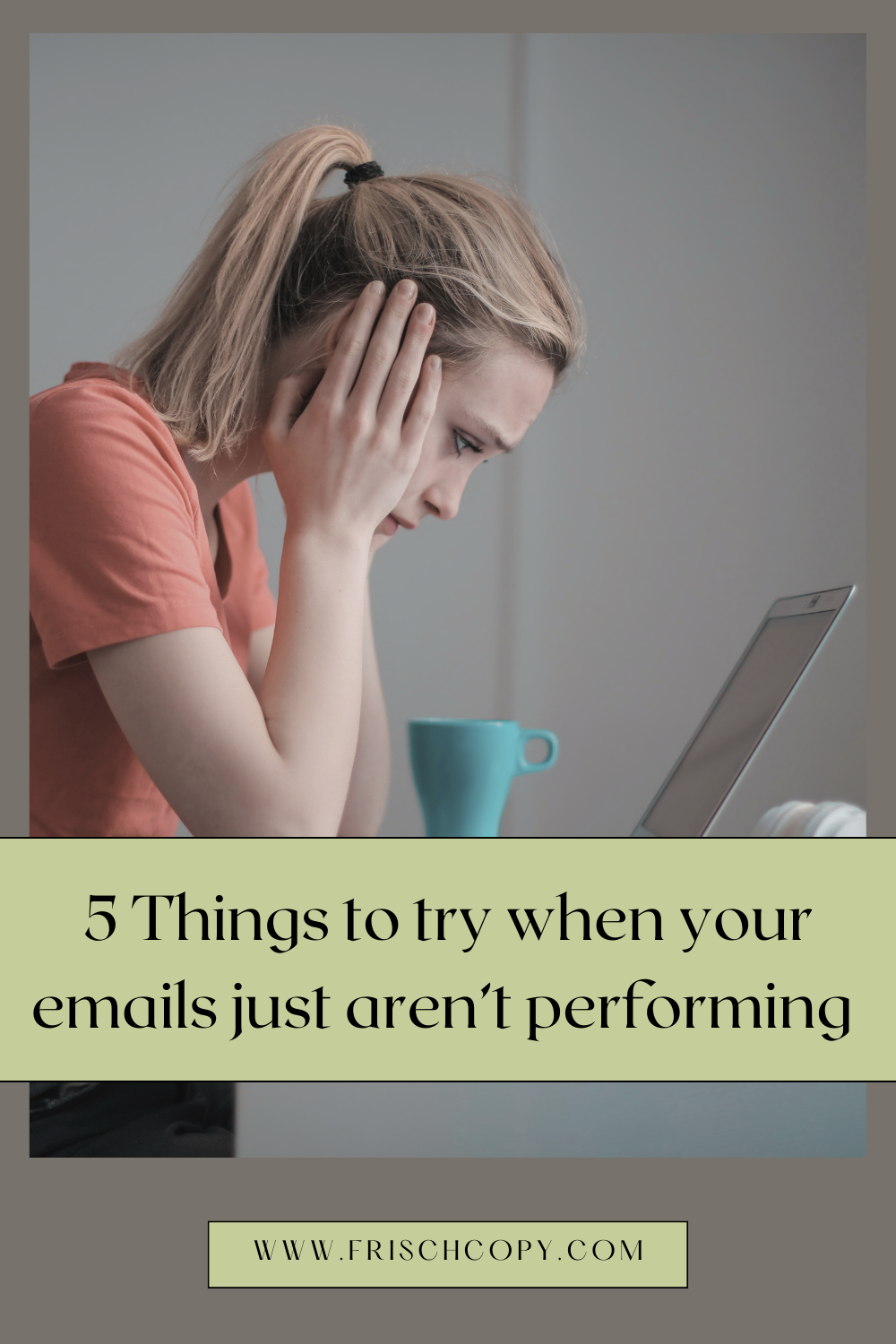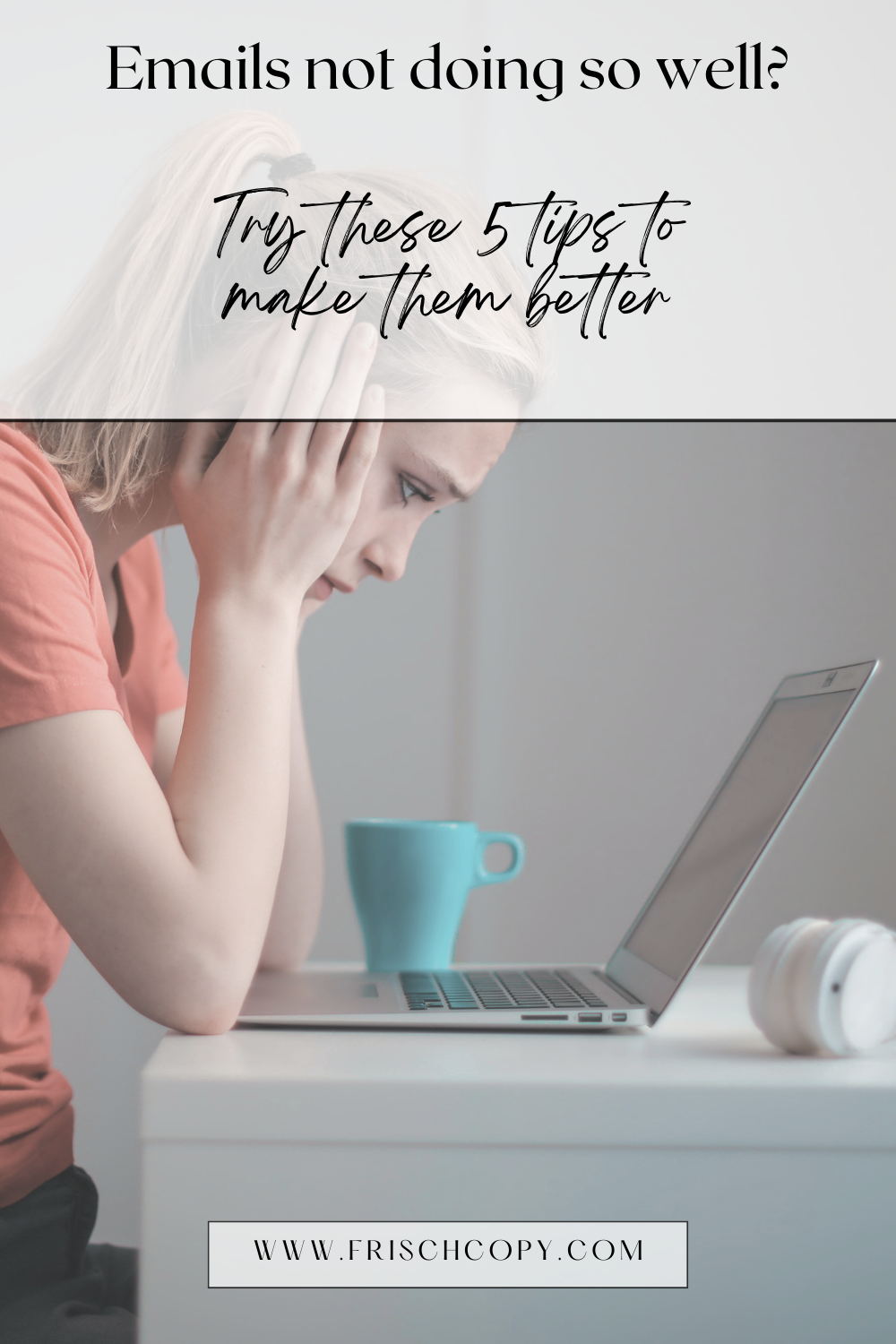5 Things to try when your emails just aren’t performing
As entrepreneurs and biz owners, we have to be okay with change. We also have to be okay with the fact that the first time we try something, it’s likely not going to go as planned. Maybe even the second or third time.
But that’s actually a great thing! By remaining flexible and taking “failures” as opportunities, not only do we get to grow, but we’ll end up thriving.
I read an email from Seth Godin this morning (I often binge his emails at breakfast), and he suggested a mindset shift that was SO fitting for this idea of taking failures as opportunities. He said:
“One way forward is to rename this moment and change the story. Instead of “I was wrong,” perhaps it’s useful to say, “It’s time to make a new decision based on new information.”
Thank you, Seth, for this nugget of gold 😊
Anywhooo… One thing that tends to be tricky for many entrepreneurs is their email strategy. Maybe you’ve even struggled with thoughts like these:
What do I even write about?
How do I keep them interested in what I have to say?
Why aren’t my emails getting opened?
I could probably write a million more and we’d all be sitting, quietly nodding our head like, “yup, sounds about right.”
As you begin sending emails to nurture your community and continuously give them value, you might notice they’re falling a bit short. You’re doing all the things you think are the “right” way, but for some reason, it’s just not working.
And that’s why you need to be okay with change… because why keep going with something that just isn’t going well?
At this point, some people will say that at first, you should throw spaghetti at the wall and see what sticks. Because you never know what people are going to want from you, right?
And as much as I loooove being a risk-taker (insert sarcasm here because I, in fact, do not), I’d rather have some guidelines to go by. So instead of starting a solo food fight that’ll end in sauce-stained walls, here are some things to think about when your email strategy isn’t going as planned.
❗ Oh, one more thing. When it comes to emails, there isn’t really a one-size-fits-all approach. We all have different brands, voices, communities, perspectives, ways of serving others, etc. And what might work well for me might not work well for you. These are suggestions of different aspects of your emails you can look into, reflect on, and yes, maybe change.
I wouldn’t recommend changing everything ALL at once though! But after reading through this, maybe you’ll get an “ah-ha!” moment and have an idea of something to try. Any time you make a change, stick with it for a while! Don’t just try it once and then go try something else. You’ll never be able to pinpoint what’s working or not if you do that!
Okay, now enough jabbering… on to the good stuff!
Subject line
If your emails aren’t getting opened as much as you’d like, one common suggestion is to check out your subject lines. After all, that’s the FIRST thing people will see from you. And if it’s not interesting or provoking, why would they open it to read more?
Try adding some personalization. “I can’t believe I did this” turns into “Jess, I can’t believe I did this.” Your ESP (email service provider) will have an option to add personalization in the subject line as well as the body of your email. Don’t just pop in a name to do it, use it when it makes sense!
Ask a question and pique curiosity. “I didn’t know if I should do this” turns into “I mean, would YOU do this?!” Your reader says that and thinks, would I do what?! Think of it like a cliffhanger. You want to engage your reader right away from the subject line and get them interested enough that they HAVE to open your email to find out what the hell you’re talking about!
Be specific. When you know what your audience wants and need help with, a specific line to tell them exactly what’s coming is often enough to get them to open. “Tips to increase your visibility” becomes “5 easy tips to increase your visibility.” Sometimes simple is the way to go.
Use the preview text. Preview text is prime real estate to add even more context to your subject line. If you don’t use it, your ESP will typically just fill in that space with the first line of your email. Use the space!
Content
When someone first signed up for your emails, there was a promise of something that caught their attention. Maybe it was a free guide, checklist, or mini training. Maybe it was just the fact that you’d be sending tips and tricks to their inbox weekly.
Take a look at your emails. Are they related to the things that brought your readers there in the first place? If the target audience for your freebie was entrepreneurs and was called “Make Your Emails Unforgettable” ( ← that’s mine 🤭) but then all your nurture emails talk about website copywriting tips for big corporations… there’s a HUGE disconnect. And those people who were initially interested will just stop opening your emails because they’re not relevant.
Make sure you’re attracting the right audience and then delivering what you promised. You might even try playing with the length of your emails. Maybe your readers prefer long over short. You can usually A/B test those within your ESP - writing two versions of the same email (one long and one short) and sending each to a portion of your list and see if, over time, your open rate changes.
Also, make sure your content matches with your subject line! Many subject lines create an “open loop” that your reader wants to close by reading your email. If your subject line promises information about something, they’re going to open that email to learn more. If your email doesn’t deliver that info… you’re in deep doo doo. That leads to a lack of trust and your readers are going to say “peace out.”
Writing approach
How are you writing your emails?
Are they written as a diary entry or in the style of a newsletter?
Are they vague and lacking value?
Do they stem from a story that includes suspense, relatable moments, and personal experience?
Do you write to your community like they’re academic scholars with 10 PhDs or like they’re a group of friends sitting with you at a coffee shop sharing casual conversation?
Do you talk AT them or TO them?
I’ll die on a hill for this, but you neeeeed to be using stories! No surprises there, right? I mean, that’s kind of my whole thing. It doesn't have to be a long-ass novel though. Short and sweet stories can be just as effective if they’re relatable and relevant.
Think about this: people learn through story. It’s how they create meaning of the world around them. That’s why we shouldn't just tell people how they need to feel about something. We can use our stories to help them experience a moment or an emotion through the words we choose to use. Don’t tell them, let them FEEL it.
Frequency
How often are you sending emails to your list? Some people swear by daily emails and their audience loves it. Their unsubscribe rate isn’t that high either. Others (like myself) opt for a single weekly email.
Different audiences have different preferences. Are you sending short daily emails but they’re not getting opened? Maybe try creating one longer email for a weekly touch-base with your readers.
If you’re sending more than say, 3 emails a week and they’re not getting read as much as you’d like, it might be worth playing with the frequency. You might even consider giving your readers the option to personalize their subscription, opting for daily emails or one weekly email.
If you’re emailing less than once a week, you might be out of mind for your readers. I’d play with seeing if you adjust your schedule and create a little more time to get to a weekly email.
It’s all about finding balance here and what works best for your community. You don’t want to overwhelm them but you also want to make sure you’re delivering value and staying top of mind.
CTA
All emails should have a CTA (call to action). It doesn’t have to be a big shiny button that says “CLICK HERE TO BUY NOW!” ← that made me feel sleazy just writing that 😅
But you DO need to tell your readers what you want them to do next. Don’t make them guess. I’ve seen some emails where they try to get cute and clever with the CTA but it left me thinking, “what’s actually going to happen when I click this??” If I don’t know what to expect, I’m not going to click.
If you want to direct them to a different page (blog, podcast, sales page, etc.), you can do so through a button or just hyperlinking text within the body of your email. A good rule of thumb is to make sure your CTA starts with a command verb.
For CTA buttons, try not to make them tooooo long. A while back, I was listening to a podcast (can’t remember which one) but they explained a little trick. A clear CTA should be able to complete a sentence like, “I want to know how I can… “
-Sign up for free training
-Learn more about xyz
-Discover the benefits of xyz
Do you HAVE to do this? No! But it can be helpful if you’re stuck.
If you’re hyperlinking text, try to stay away from statements like, “I’d love for you to click and read my new post.” Instead, write something like “Read my new post - tip #5 is one you’ll absolutely use right away!” Tell them what you want… (what you really, really want 😶)
If your valuable content is the email itself, your CTA could be a question you ask your readers at the end and a statement like, “hit reply and tell me your biggest takeaway from these tips.”
Also, check out what you’re writing BEFORE the CTA! That’s valuable space to get them ready for what you want them to do. Write something that piques interests or sparks curiosity so when you add that button or link, they’re ready to click.
What it all comes down to
Remember… a lot of marketing really is trial and error. Yes, there are strategies we can follow, best-practices, and dos and don'ts that many before us have established through trial and error.
…BUT as time goes on and society changes (and somewhat rapidly, it seems), a lot of marketers are finding that what they expected would happen isn’t what necessarily happened. The people who did it before us and placed a set of “rules” for us to follow weren’t US and sometimes, those rules don’t work!
For example, I can’t tell you how many times I see people say, ”Keep your emails short. No one reads anymore.” Yet I LOVE some of the longer emails I get in my inbox. They’re filled with stories and packed with information. I will read those emails ALL damn day and honestly, would rather get that than the super promo-y emails from the same company 5x a week. Just sayin’.
You are unique. Your audience is unique. But one thing holds true across the board. In 2023, people want connection and they want community.
You can give them that through your emails.
Reflect on the points I made in this post and see where you can start testing some changes to help serve your readers even more.
And if you know you want to start adding more story to your emails but you’re stuck on how, that’s what my free guide is for. It’s made especially for entrepreneurs and small biz owners who want to create genuine connection with their community though story-driven emails. Grab it here.
Did you gain any fresh insights from this post? Is there something you’d like to learn more about that I didn’t touch on? Comment below 😊



